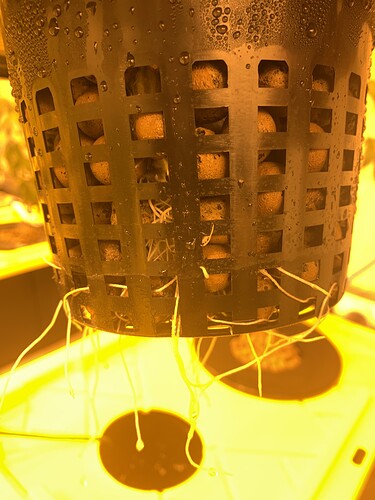No my retard partner is using tap from a hose
Well at least you know he’s retarded
Lol it’s how he used to do it at the old spot and I always told him he was lucky because the pipes were probably new
Chasing down a water issue can drive you crazy…
When I lived in Rhode Island I was the clone god I could root a popsicle stick. I moved to mass and struggled so hard forever until I used distilled water
Anyone ever plate their water after running it through one of those things? I always doubted how effective they were
We use 2 Uv sterilizers on our system. The first one pictured above is for our standard water supply (hot water and cold water at the sink) then we use a Uv sterilizer on the out feed of the RO water
We have a massive 8 bulb aquafine unit we use for our RO water that I’ve validated but I just never really trusted the rinky-dink pond sterilizers. Wondering if what we have is just mega overkill
My thought is if it’s good for 650 gallons an hr it’s probably good for 300 or so I use a day. I should probably test it all. What’s your process on that?
I just mix up some agar, run a control or two of just agar and then add some water from the system to a few more plates. Give em 72 hours to incubate and see if there are any colonies growing
Got the agar plates ordered. Thanks for the tip, I’ll get some samples going and will report back. Kinda nervous to see the incoming water supply given I KNOW there’s an issue there already…
Time will tell!
![]()
Gotta love some science!
Is there a way to analyze the colonization?
Other than ![]()
![]()
There are tons of ways to assess what is growing and how much. Everything from staining to PCR. Ultimately the gold standard would be qPCR for fusarium, phythoptera, and pythium but as far as I’m concerned if there are no colonies, there’s no bad wee beasties.
What you can do is make a bunch of serial dilutions of your water using sterile water and administer 1g, .1g, .01g etc of your irrigation water, then count the colonies and compute the CFU/g. This is how finished product plating is done. Might help you get some actual quantitative data. Just remember to make a control of your “sterile” water you use for dilutions otherwise you can lose your mind lol
If attempting to run “sterile” run calcium hypochlorite (calcium pool shock) and use an orp meter. When hypochlorite is dropped to the ph run in a hydro system most of it converts to hypochlorous acid. Many commercial tomato nft systems are run this way.
HTH Pool Shock is concentrated powder hypochlorous acid. Add 24 grams pool shock per gallon to make 6% bleach. Use 1 ml per 5 gallons to keep your reservoir or cloner sterile.
Alternately, use 5 drops off the shelf unscented landry bleach per gallon. 1 ml./5 gallons.
Bleach leaves a residue on plastic that takes a long time to remove. I made the mistake of using bleach once, and had to turn my aeroflo into a compost tea machine for a month to get the bleach out. Maybe it works in a “sterile” grow, but if you depend on beneficial bacteria, it wrecks everything for quite some time.
Yes, only use in a “sterile” environment. If you ever need to remove chlorine or chlorine bleach the future, good old vitamin c (acsorbic acid) will do it, but it won’t do anything to chloramines.

